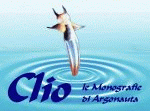
Clio Supplemento a Argonauta 7-12 2012
 |  |
Murella scabriuscula (Deshayes, 1830)
Altra specie esclusivamente siciliana con distribuzione limitata alla Sicilia nordoccidentale. Questa è una delle specie che sembrerebbero più caratteristiche della Sicilia e anche della penisola italiana(ricorda in maniera stupefacente solo il Tyrrheniberus sardonius della Sardegna, il quale però ha l’ombelico sempre aperto e diversità anatomiche che pare ne giustifichino il diverso Genere). In realtà questa specie che nella sua forma tipica, discoidale, molto carenata e schiacciata, è assolutamente caratteristica e riconoscibile, presenta, a mio parere, due forti tendenze verso altre Murella ovvero, da un lato verso M. muralis e dall’altro, verso M. globularis. Questo, come già ricordato per le altre specie siciliane, porta a condividere tendenzialmente le conclusioni di Fiorentino et al. relative ad una superspecie appartenente al clade 1 riferibile a M. muralis. Queste conclusioni basate su analisi di genetica molecolare, erano state per certi versi “intuite” da tempo, come riportato in Alzona : “ Alcuni Autori (Rensch, 1937) vedrebbero nelle Murella (s.s.) di Sicilia un’unica grande specie, suddivisa in gruppi razziali di varia entità”. La forma M. m. segestana, ad esempio, presenta molte affinità con forme di M. muralis, ad esempio la M. muralis riberota, la scultura increspata è molto simile anche se in M. segestana vi è la presenza di una carena più o meno accentuata. In alcune forme nei pressi di Erice, vi sono evidenti passaggi verso una forma che tende alla Murella platychela (Menke, 1830) con la carena che può essere presente in maniera evidente oppure del tutto assente con profilo globoso. | Another species with distribution limited to only Northwest of Sicily. This is one of the species that seem more characteristic of Sicily and the Italian peninsula (remember in an astonishing way only Tyrrheniberus sardonius of Sardinia, which, however, has the navel always open and anatomical diversity that seems not justify the different Genus). In fact this species in its typical form, discoid, very faired and crushed, is absolutely characteristic and recognizable, has, in my opinion, two strong tendencies towards other Murella that is, on the one hand to M. muralis and on the other, to M. globularis. This, as already mentioned for the other Sicilian species, door tend to share the conclusions of Fiorentino et al. related to a superspecies belonging to clade 1 refers to M. muralis. These conclusions are based on analysis of molecular genetics, were somewhat "guessed" for some time, as shown in Alzona: "Some Authors (Rensch, 1937) would see in Murella (ss) of Sicily single large species, divided into groups race of varying degrees. " The shape M. m. Segesta, for example, presents many similarities with forms of M. muralis, for example, the M. muralis riberota, the sculpture rippled is very similar although in M. Segesta there is the presence of a hull more or less accentuated. In some forms near Erice, there are obvious steps towards a form that tends to Murella platychela (Menke, 1830) with the hull that may be present in an evident way or entirely absent with bulbous profile. |
